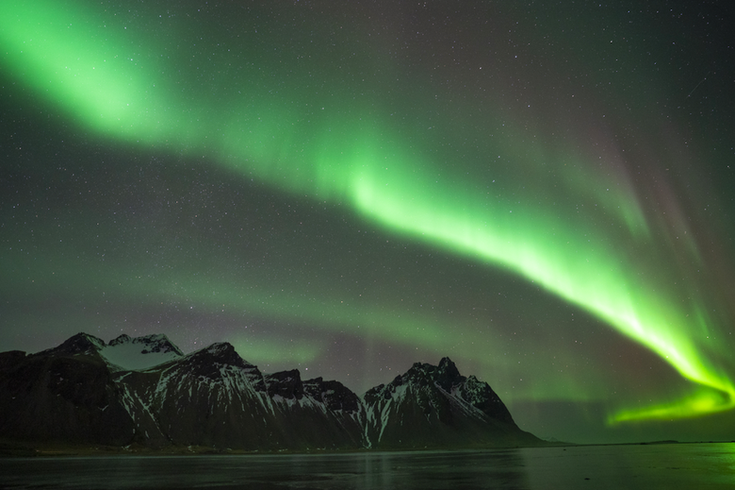
July 30, 2024
 Owen Humphreys/Sipa USA
Owen Humphreys/Sipa USA
Geomagnetic storms could cause the Northern Lights to be on display in Philadelphia this week due to large solar flare activity.
Update, 11:30 a.m.: Forecasting models from the National Oceanic and Atmospheric Administration now show that the Northern Lights will not be visible in the Philly region on Tuesday or Wednesday night. The farthest south that they are expected to be visible is upstate New York.
If you missed the Northern Lights in May, the skies might offer another viewing of them in Philadelphia this week.
The aurora borealis typically only visible near the Arctic Circle, but unusual solar activity unusual solar activity potentially may expand their visibility as far south as the Philly region on Tuesday and Wednesday.
On Sunday night, a large solar flare – an influx of energy from the sun – was observed from a portion of the sun facing Earth. They're a fairly common, but this one was an X-class flare, the strongest type. The flare caused coronal mass ejections – a large bursts of plasma and magnetic fields from the sun's corona – to be directed towards Earth. Because of that, the Space Weather Predictions Center put out a geomagnetic storm watch for July 30 to Aug. 1.
Geomagnetic storm conditions can impact radio signals and GPS tracking. They also may make the Northern Lights visible along the northern horizon. Scientists predicted that Tuesday morning and Tuesday night from 8-11 p.m. are the best chances to see them — but some have cautioned that display predictions can be off by as much as 24 hours.
Storm clouds also could impact visibility. The National Weather Service forecast calls for a 70% chance of rain on Tuesday night. Some of the storms may produce heavy rainfall.
Another M-class solar flare, the second largest type, was observed Monday, which could produce additional opportunities for viewing. The sunspot group causing these flares is very active, CBS3 reported. That may mean more opportunities to see the Northern Lights are ahead.
Those wanting to stay in the know can track the activity on the Space Weather Prediction Center's aurora dashboard. Auroras can be seen anytime after sunset and experts recommend getting away from city light pollution, if possible.
The lights were last on display in the Philly area in May, with visibility reaching the southern U.S. states.